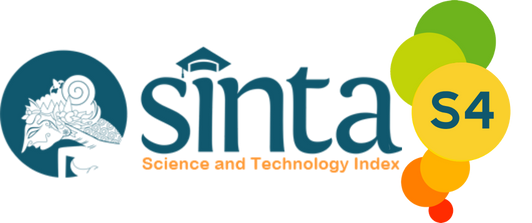KEMAMPUAN PENGGUNAAN PARTIKEL NI DAN DE PADA MAHASISWA TAHUN MASUK 2021 PROGRAM STUDI PENDIDIKAN BAHASA JEPANG UNIVERSITAS NEGERI PADANG
DOI:
https://doi.org/10.24036/omg.v7i1.768Keywords:
Ability, Ni and De particleAbstract
This research was prompted by students challenges in comprehending the usage of Ni and De particles, which, despite conveying similar meanings, serve distinct functions. The objective of this study is to assess the proficiency in employing Ni and De particles among students in the Japanese Language Education class of 2021 at Universitas Negeri Padang. The research methodology employed is quantitative, utilizing descriptive research methods. The study’s population consists of 53 individuals, with the sample size selected through purposive sampling from the JPG 1 class of 2021, totaling 27 participants. The data for this study were derived from scores on the Ni and De particle proficiency tests administered to students in the Japanese Language Education program. Based on the findings of this research, the following conclusions can be drawn as follows. Firstly, the overall proficiency in using Ni and De particles among the class of 2021 at Universitas Negeri Padang’s Japanese Language Education Study Program falls within the “Well” qualification, with an average score of 64.8. Secondly, the proficiency in using Ni particles is categorized as “Good,” with an average score of 73.3. Thirdly, the proficiency in using De particles among students is deemed “Sufficient,” with an average score of 57.4.References
Arifin, Zainal. (2012). Penelitian Pendidikan. Bandung: PT Remaja Rosdakarya
Arikunto, Suharsimi(2010). Prosedur Penelitian: Suatu Pendekatan Praktik. Jakarta : Rineka Cipta.
Cahyani, Dewi (2019). Kemampuan Penggunaan Joshi De dan Ni sebagai Penanda Keberadaan Tempat atau Benda Pada Siswa Kelas XI SMA Negeri 8 Padang. Skripsi. Padang. Universitas Negeri Padang
Chandra, T (2009). Nihongo No Joshi Partikel Bahasa Jepang. Jakarta: Evergreen Japanese Course.
Djiwandono, M.Soenardi. (2011). Tes Bahasa Pegangan Bagi Pengajar Bahasa. Jakarta: Indeks
Harjo, Budi. (2011). Dasar-Dasar Bahasa Jepang I. Padang:Sukabina Press
Ichikawa, Yasuko. (2005). Shokyū Nihon Go Bunpō to Kangaekata no Pointo. Japan: 3A Corporation.
Marion, Carolina. (2008). Analisis Kesalahan Penggunaan Partikel Ni dan De. Jurnal. Jakarta Barat. Universitas Bina Nusantara.
Nurjanah, Risna. (2020). Analisis Makna dan Penggunaan Partikel De (で ) Dalam Bahasa Jepang Ragam Bahasa Tulis (Blog). Skripsi. Padang. Universitas Darma Persada.
Sari, Arni (2023). Analisi Fungsi Kakujoshi De Dalam Aplikasi Todai Easy Japanese News. Omiyage : Jurnal Bahasa dan Pembelajaran Bahasa Jepang, volume 6, No 1, hal 81-91.
Sudjianto dan Dahidi. (2009). Pengantar Linguistik Bahasa Jepang. Jakarta : Kesaint Blanc
Sugihartono. (2001). Nihongo no Joshi. Bandung: Humaniora Utama Press.
Sugiyono. (2016). Metode Penelitian Pendidikan. Bandung: Alfabeta
Sugiyono. (2019). Metode Penelitian Kuantitatif, Kualitatif, dan R&D. Bandung: Alfabeta.
Sutedi, Dedi. (2009). Penelitian Pendidikan Bahasa Jepang. Bandung : UPI Press
Sutedi, Dedi. (2011). Dasar-Dasar Linguistik Bahasa Jepang. Bandung: UPI Press








